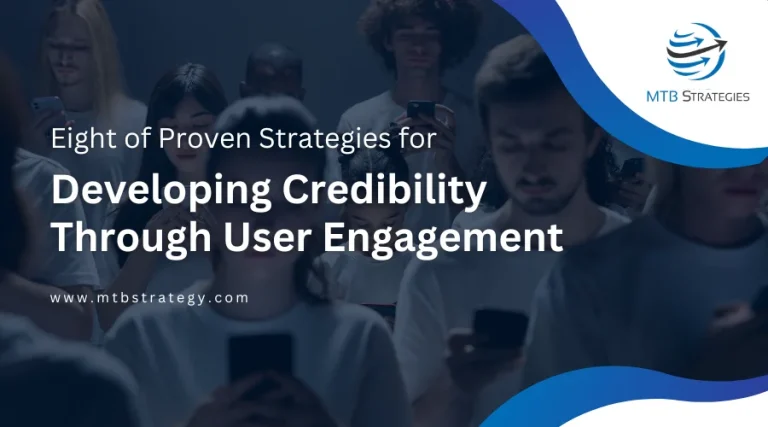The majority of people are aware of how crucial UX is to any marketing plan. Did you know, though, that UX is a process that involves putting the customer at the heart of your strategy and making business decisions based on actual customer data?
How can you achieve fantastic UX? We’ll look at 10 strategies in this article for every successful UX project, whether you work on it internally or with an outside consultant like Englewood SEO Company.
What Does “UX” Mean?
Is UX solely about design and producing a pleasing user interface? Or is it more about strategy and planning? In actuality, all of those things are involved. after which some more.
The user interface (UI), which is everything you see, touch, and interact with on a screen, comes to mind when people think about user experience (UX). It is the appearance of a webpage or what you are tapping on your phone. Another concept that comes to mind is customer experience (CX), which encompasses all of the client loyalty you’ve accrued as well as how easy it is for them to do business with you.
In the middle of all of this is UX. It’s a technique for comprehending the CX that you wish to develop and the experience that you’re attempting to achieve and then matching it up with an effective UI.
What Does UX Do?
Delivering digital assets that satisfy customer needs and advance corporate objectives is the goal of UX. In fact, you may consider it to be the area where digital assets, user needs, and corporate objectives converge.
Digital Assets
The most concrete deliverables from a UX project are the digital assets, such a web page or an app interface. These ought to be created with thorough user research. Then you can prototype them and run user group tests.
Easy Access
Making the user’s life as simple as possible is one of UX’s main objectives. Due to this, it is crucial to consider the viewpoint of the customer. Make sure you comprehend their desires. Include them in the planning and decision-making processes.
Corporate Targets
Even though the user is at the core of every UX project, business objectives must also be considered. It is as useless to create items that don’t meet customer wants as it is to create products without taking company needs into account.
Between what the customer claims to need and what the company wants to sell them, you need to strike a delicate balance. You run the risk of missing out on possibilities to sell consumers goods or services they hadn’t even considered if you concentrate only on what they say they want.
When Should UX Be Considered?
When you’re introducing a new product or going through a time of change, you and your brand may need to concentrate on UX.
Companies typically keep user experience (UX) top of mind while launching a new product or modifying an old one. They might be keeping an eye on what their rivals are doing in an effort to give their own clients a better UX. The majority of businesses today recognize the need of devoting time and resources on UX early in the development process.
When a business is going through a transition, such as when it seems the market is moving without them or that their rivals are catching up to them, this can be a stressful time for them. Similar to contacting a plumber when there is a leak, they call in UX consultants when they see something is broken and want it fixed. However, they might need to rethink their entire plumbing system and look past the leak!
UX research can offer insightful information about what customers really want and how the business must change to match shifting customer expectations. If a company’s conversion rates are a concern, for instance, a UX consultant may dig further, asking why customers are leaving their shopping carts empty or why there are so few repeat customers.
10 Steps to a Successful UX Plan
These ten stages will enable you to deliver an excellent UX strategy.
1. Determine the Issue
When a business notices a problem, like a large volume of consumer complaints, UX consulting frequently starts. At this point, the UX consultancy is brought in as a troubleshooter and given the assignment of resolving an immediate issue. You may take action to address your problem once you’ve identified it clearly.
2. Have a Clear Goal
Every effective project and strategy begins with a well-defined objective. This provides all efforts direction and prevents time from being squandered on pointless things.
Set your aim at the beginning of your UX journey. What measures must you take, in other words, in order to solve the issue you’ve discovered?
Your UX objective in digital marketing will probably be to improve digital products that will engage users and, eventually, increase revenues. You must discover as much as you can about your users in order to accomplish this. You can create goals that meet consumers’ demands if you have solid user-centered data.
3. Check the Competition
Spend some time carefully examining what rivals in your field are doing. Try a customer journey on your website or app, and then try a similar one on the websites and applications of your rivals. Analyze your performance in relation to that of your rivals.
Concentrate on five or six of your rivals. Then establish benchmarks to compare your performance with that of your rivals at various stages throughout the consumer journey, such as social media platforms. Do you require a new interface? Should you streamline the customer experience?
Consider yourself a customer browsing all these many websites and apps. Which option would you pick?
4. Examine the UI
User interface (UI) is frequently the first thing that comes to mind when discussing UX. And that is a good place to begin.
Good UX is likely to result from a well-designed UI. Consider your interface’s layout as a result. How logical is it? How simple is it to communicate with? Does it meet the needs of the customers? (And is it superior to the user interfaces of your rivals?)
Keep in mind to consider your clients’ needs when creating or changing your interface.
5. Recognize How Customers are Affected
But having a great user interface is only one aspect of user experience. The total customer experience (CX) must be considered. How do clients feel about working with you? Why are they experiencing that?
Consider what distinguishes your company from the competition and the unique extra that attracts clients. For instance, perhaps you’ve implemented one-click shopping to make it very simple for users to make purchases on your app or website. The button is a component of the user interface, but the customer experience is created by the ease of use of the interaction.
6. Make a Prototype
Any project involving user experience must include prototyping. Here, you build a rudimentary, early version of the product or interface to test it out with users. It doesn’t need to be perfect; it’s frequently referred to as the minimum viable product (MVP). In actuality, the motto for prototyping is frequently “fail fast, fail often.” In other words, take note of your early errors and move forward rapidly.
Prototyping has the major benefit of allowing you to “test the market” before spending money on large-scale production. Early MVP feedback will assist you in creating a far better, more user-focused product later on.
You must frequently employ clickable mock-ups for prototypes rather than completely functional interfaces (made with InVision or Figma, for example). You can then gradually alter these designs based on the feedback you receive from your qualitative and quantitative research until you have a functioning prototype.
7. Run User-Testing
User testing is a crucial component of every UX approach. As much unbiased qualitative and quantitative data as you can collect is preferred. Pose meaningful questions to your users. Watch them as they use your stuff. Ask them to describe how it was for them to use the product for the first time.
Make that your users provide you with reliable feedback and commentary. Avoid interjecting or directing their remarks. Just allow them to freely express their opinions to you.
When your prototype is finished being refined, you could feel more comfortable releasing it to broader test user populations. It is important to take a gradual approach. It serves no purpose to test a prototype with a sizable user base before it is even close to being finished. Before moving on to the more expensive large-scale tests, start with the inexpensive tiny tests. Test as early and frequently as you can.
Your final product should start to take shape as you carry out multiple small-scale testing, getting slicker and more targeted. What’s more, it grows more in line with how consumers desire to utilize it.
You are now prepared to do A/B testing on several product iterations. You can then fine-tune particular aspects of the product, such as color schemes, font selections, or button placements.
8. Review the Data
Before releasing the finished product, you want to collect as much meaningful data as you can through prototyping and testing.
You can get the hard data from quantitative feedback, such as statistics on levels of pleasure or frustration.
Qualitative data, however, could provide you with more insightful comments. Nevertheless, qualitative feedback occasionally contains errors because people could give you the feedback you want to hear rather than the truth. It’s crucial to gather both qualitative and quantitative data because of this. What you observed, does it coincide with what others have reported regarding their use of the product?
Look over your analytics to see if you can identify any broken or ineffective parts of your trip. Additionally, compare these stats to the feedback and discussion from your users to see what they are telling you.
9. Utilize AI
UX is being significantly impacted by artificial intelligence (AI).
Various UX tasks, such as developing user interfaces, can be accomplished with AI technologies like Jasper, Kroma, and Stable Diffusion. For boring, repetitive chores like copying changes across numerous displays, it is very helpful.
AI can also assist in resolving many UX-related issues, such as how to streamline user interfaces or how to evaluate vast volumes of user data. To tackle issues that can be solved by people, however, there will still be a significant requirement for human contribution and creative intellect.
10. Adopt a UX Perspective
It ought to be obvious by this point that UX isn’t a one-time fix. It entails acquiring a UX attitude. What sort of client experience are you hoping to provide? How do you give that experience while employing a simple user interface and other digital resources?
Pay attention to your clients. Obtain accurate information on them. Afterward, use this information to inform company decisions.
After identifying and examining the issue, the UX expert will probably suggest a few quick, easy fixes. These are typically the “low-hanging fruit” that provide the business fast victories. Rarely is there a single “silver bullet” solution to every company’s UX issues.
In order to assist the business in adopting a UX mentality, the UX consultant is more likely to delve deeper and begin making recommendations for some structural improvements. This seeks to stop similar UX problems from happening again.
Final Thoughts
The implementation of these kinds of solutions can be challenging, necessitating a longer-term working relationship between the UX consultant and the business.
You may integrate the UX mindset into your brand culture by following these ten steps and consulting external experts such as MTB Digital Marketing. The client can then be considered in all company choices as a result of this.






